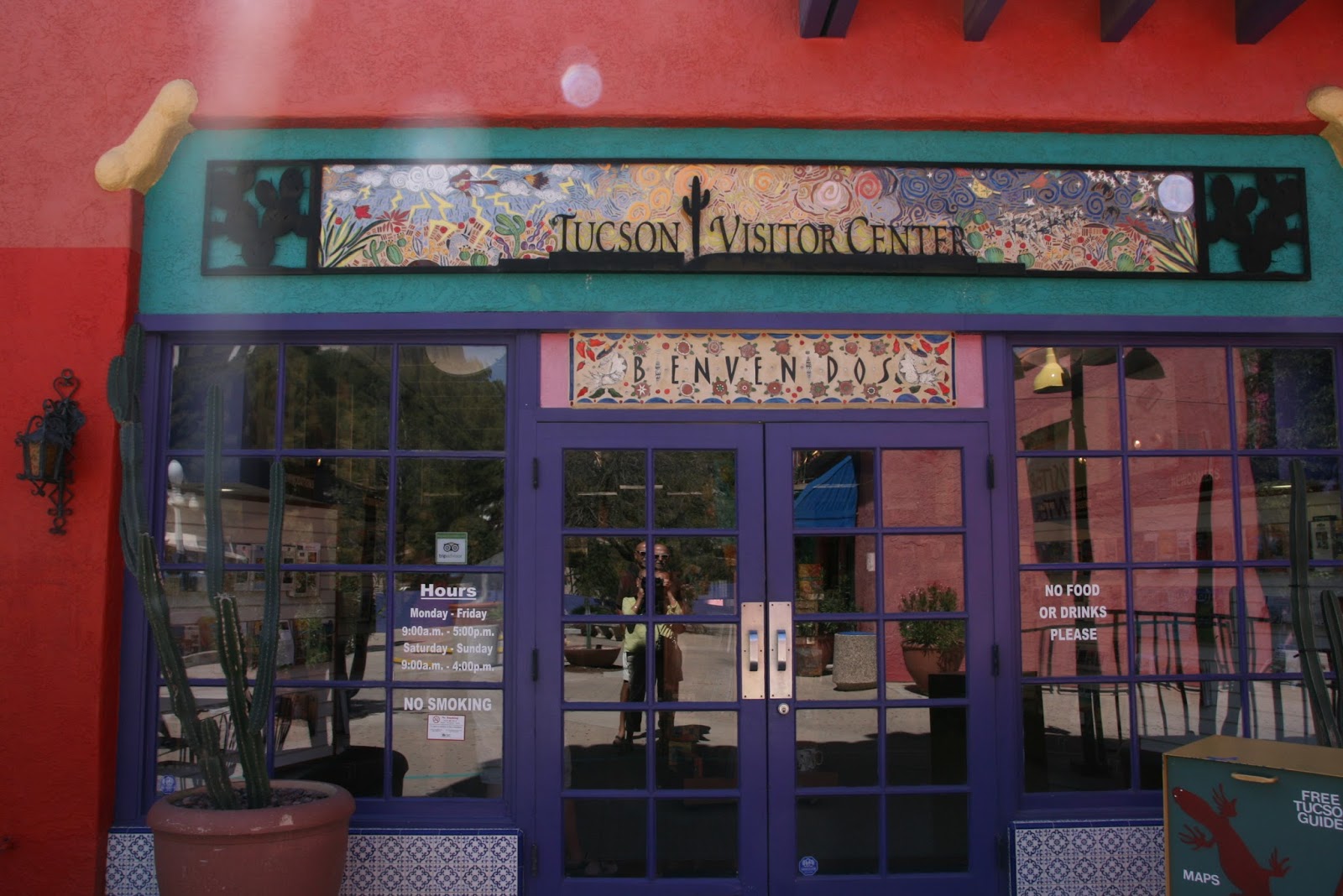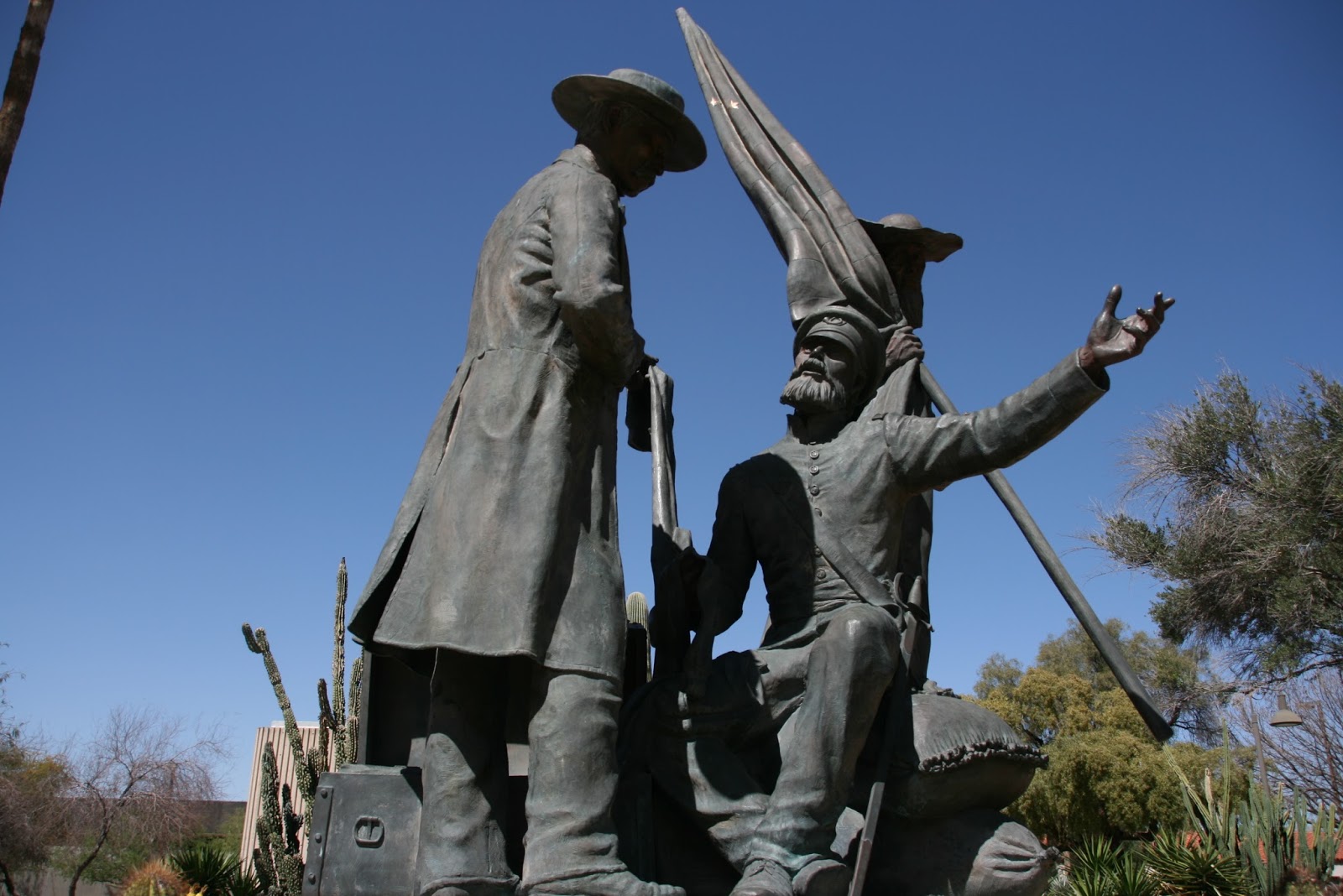March 2014 - Tucson AZ
We spent a leisurely day around Tucson.
We started with breakfast at the Congress Hotel.
I t was built in 1919 in conjunction with the musical venue Rialto Theatre, which sits across the street. The rear of the building faces the historic Amtrak station, built by Southern Pacific in 1907. In addition to being a hotel, the Hotel Congress building also houses a restaurant, bar and music venue.
The Hotel is known for being the site of the capture of bank robber John Dillinger in 1934. After a series of bank robberies, the Dillinger Gang arrived in Tucson to hide out. On January 22, 1934, a fire started in the basement and spread up to the third floor, where the gang resided under aliases. After the desk clerk contacted them through the switchboard the gang escaped by aerial ladders. On the request of the gang, two firemen retrieved their luggage, identifying who they were. After being transferred to a jail in Crown Point, Indiana, Dillinger escaped again and was eventually shot down in Chicago, Illinois.
Floor made out of pennies!
Then we wandered around the area.
Construction began on what was to be called the Tower Theatre at Congress and Stone on August 24, 1929. The theatre was to be the crown jewel in the Diamos Brothers’ Lyric Amusement chain of theatres throughout Southern Arizona. Designed as a dual vaudeville/movie house, the Fox featured a stage, full fly-loft, and dressing rooms beneath the stage. The combined effects of "talkies" and the Depression limited the opportunities for live performance, and the dressing rooms were never completed.
Opening night, April 11, 1930, proved to be the biggest party the small community of Tucson had ever seen. With Congress Street closed and waxed for dancing, four live bands, a live radio broadcast and free trolley rides The film "Chasing Rainbows," a MovieTone short, and a Mickey Mouse cartoon were well received by both audiences that evening, and the Fox Theatre began its 40 year life as the center of Tucson’s entertainment world.
Competition from other venues, drive-ins and television conspired to end the run of popularity the Fox had enjoyed. Partial remodels of the theatre left it with most of its original charm, but vanishing retail and housing downtown spelled the end in 1974. Various efforts to revive the theatre were unsuccessful, but luckily the property was spared the wrecking ball.
Outside the library looking across at the Pima Court House.
Gorgeous visitor center with very helpful staff.
We stopped at the St. Augustine Church - Click here for some details on the church.
Time to check out one of the many micro-breweries in Tucson Thunder Canyon.
Back to the Pima Courthouse and was so intrigued to see this statue dedicated to the Mormon Battalion. We had never heard of them until San Diego and San Luis Rey Mission.
This courthouse, designed in 1928 in Spanish Colonial style, is a nice architectural homage to Tucson's Spanish-Mexican past.
Downtown Tucson Partnership:
“Built in 1929, the Spanish Colonial Revival courthouse is one of Tucson’s most beloved landmarks. Its mosaic dome is one of the Old Pueblo’s most recognizable structures. A portion of the east wall of the original Presidio of Tucson runs through the courtyard and is marked with a strip of granite. The building is still in use with courts and county offices.”
Next were the mansions of Main St.

Barrio district.
Brewery stop
We then drove to San Xavier Mission but that will be a separate post.
At the Mission.
WEST BOUND LAST DECEMBER

.JPG)
.JPG)
.JPG)
.JPG)
.JPG)
.JPG)
.JPG)













.JPG)
.JPG)
.JPG)










.JPG)
.JPG)
.JPG)
























Hi Jackie, this is a lovely series of photos :)
ReplyDeleteI like that floor made of pennies. I wish I could do that in my kitchen. I wonder how much money it would take. That mosaic dome is so pretty that I can see why it's a landmark.
ReplyDeletelovely photos, thanks for the tour of tucson.
ReplyDeleteCool post, loved the quirky details like the penny floor! thanks!
ReplyDeleteWonderful views of Tucson. I love the colors in the old parts of town.
ReplyDelete